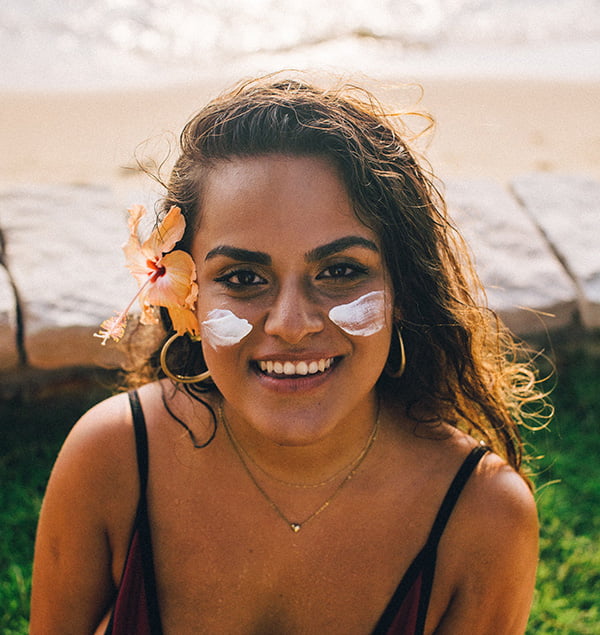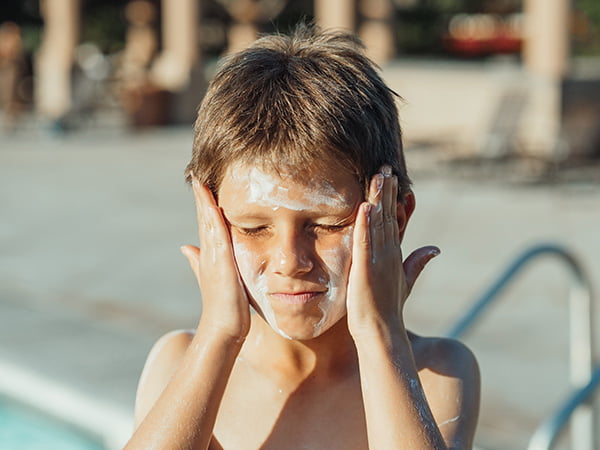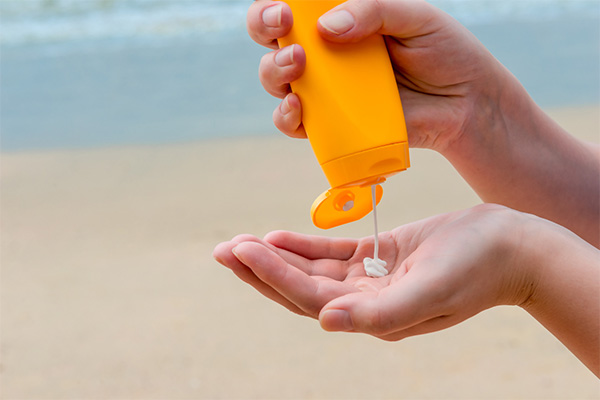The sun's warm embrace can be inviting, but it's ultraviolet (UV) rays can wreak havoc on your skin, causing damage far beyond a simple tan. This is where sunscreen takes on the role of your steadfast protector, guarding you against the adverse impacts of the sun. But here's the catch: slathering sunscreen in the morning isn't a one-and-done deal. To truly keep your skin safe, it's crucial to become adept at reapplying sunscreen.
In this guide, we will discuss how often you should reapply for sunscreen. Whether you're basking on the beach or spending your day indoors, the frequency of sunscreen touch-ups can make all the difference between glowing, protected skin and unwanted sunburn surprises.
Why Should I Reapply Sunscreen?
Sunscreen should be reapplied regularly throughout the day to protect skin from sun damage! Because ultraviolet rays can even penetrate glass, most of us are exposed to the sun for large parts of the day. It's important to stay protected. Since sunscreen wears off during the course of the day, we need to reapply regularly.
The sun releases multiple varieties of UV rays, each of which can cause skin damage in different ways.
UVA Rays - Ultraviolet A rays have a long wavelength, enabling them to penetrate deeply into the skin. UVA rays cause long-term skin damage, such as skin cancer, age spots, premature aging, and wrinkling.
UVB Rays - Ultraviolet B rays have a shorter wavelength and affect only the top layer of the skin. Although the effects of UVB ray damage are less long-lasting, they can cause tanning, discoloration, and painful sunburns.
Sunlight contains approximately 500 times more UVA rays than UVB rays, so it's important to remember that your sunscreen choice needs to do more than just deter sunburns! Blocking UVB rays alone is not enough to avoid the damage caused by the sun's harmful UV rays.
What Does The SPF Rating Mean?

All types of sunscreen are rated using the Sun Protection Factor, or SPF. A common misconception is that SPF stands for the percentage of sun protection it provides, but this is not true. An SPF level of 50 does not mean you are protected from 50% of the sun's ultraviolet rays! Instead, this number, typically printed prominently on the bottle or tube of sunscreen, tells you how many times a specific sunscreen will protect you from redness caused by UVB rays compared to not wearing sunscreen at all.
For example, sunscreen with an SPF of 15 indicates that it will provide you 15 times the protection against UVB rays compared to not wearing any sunscreen. You typically start to burn after 15 minutes in the sun. If you instead applied sunscreen with an SPF of 15, you now have protection that is 15 times your typical quarter-hour time. That equates to 225 minutes or almost 4 hours.
However, there are two caveats.
Firstly, SPF measures the ideal use of sunscreen, including proper application and no exposure to any elements that would wash it away. Many of us apply sunscreen haphazardly and either jump into water or sweat - two things that can wash off the sunscreen! Due to this fact, it's advisable to reapply sunscreen at least every two hours, regardless of the SPF of the sunscreen.
Additionally, SPF solely gauges defense against UVB rays without addressing safeguarding against UVA rays whatsoever. Remember, UVA rays are the sun's most damaging rays, as they penetrate the deepest into the skin. We want to prevent more than just sunburn! To steer clear of skin cancer, we must shield ourselves from UVA and UVB rays.
The Skin Cancer Foundation advises the daily use of broad-spectrum protection sunscreen with a minimum SPF of 15. A sunscreen with an SPF of 30 or higher is recommended for outdoor activities.
How Often Should You Reapply Sunscreen?

The frequency of sunscreen reapplication is pivotal in maintaining your skin's defense against the sun's harmful rays. While applying sunscreen in the morning provides an initial layer of protection, its potency diminishes over time due to factors such as sweat, water, and simple wear-and-tear. To ensure your skin remains safeguarded, follow these key guidelines for optimal sunscreen reapplication:
Every Two Hours
As a general guideline, strive to reapply sunscreen approximately every two hours. This interval accommodates the gradual decline in the sunscreen's efficacy on your skin. Whether you're lounging by the pool, hiking, or even just enjoying a leisurely outdoor lunch, setting a timer for a quick sunscreen touch-up can go a long way in maintaining your protection.
After Swimming Or Sweating
Water activities, whether it's swimming in the ocean or sweating it out during a workout, can strip away your sunscreen. After engaging in these activities, it's crucial to reapply your sunscreen to ensure you're fully shielded. Even if your sunscreen claims to be water-resistant, erring on the side of caution by reapplying is a smart move.
Toweling Off
Toweling off after a swim or even just wiping your face can inadvertently remove your sunscreen. To counteract this, always reapply sunscreen immediately after drying yourself off to maintain consistent coverage.
Outdoor Activities
If you spend extended periods outdoors, especially during peak sun hours (typically from 10 a.m. to 4 p.m.), consider reapplying sunscreen more frequently. This includes activities like gardening, playing sports, or attending outdoor events. For hard-to-reach areas like the back, consider using spray sunscreen or having someone help you.
Indoor Exposure
Surprisingly, even indoor activities can warrant sunscreen reapplication. UV rays can penetrate windows, so if you're situated near a window for an extended period, it's advisable to touch up your sunscreen to counteract potential UV exposure.
Layering Products
If you're applying makeup or other skincare products over your sunscreen, remember that these layers can impact its effectiveness. To ensure continuous protection, try to reapply sunscreen over makeup periodically. There are many ways to reapply sunscreen over makeup without making it a mess. One of the great sunscreens to reapply SPF and touch up with is powder sunscreen. Powdered sunscreen is an easy way to dust powder sunscreen on your skin, and if you don't feel like layering, powder sunscreens are the perfect combination of sunscreen and makeup.
High Sun Intensity
If you're in a region with high UV index values or spending extended periods under direct sunlight, consider reapplying sunscreen more frequently. This holds particular significance during peak sun hours, usually between 10 a.m. and 4 p.m.
Sunscreen Types Matter
Different types of sunscreens have varying levels of staying power. Rub the product in completely, whether you use a chemical sunscreen or a mineral sunscreen. Physical sunscreen (mineral sunscreen), containing ingredients like zinc oxide and titanium dioxide, tends to last longer on the skin and is less likely to degrade with sun exposure. In contrast, chemical sunscreens can deteriorate with time, requiring more frequent reapplication.
How Much Sunscreen Do I Need To Apply?

Hearing that you need to reapply sunscreen (regardless of chemical or mineral sunscreen) every two hours for proper sun protection, you may be concerned that you'll be working through sunscreen bottles quickly, which can get expensive! However, as long as you apply the sunscreen correctly, there's no need to use an overabundance of products. Using more sunscreen doesn't equate to better sun production!
Properly applying enough sunscreen is essential to guarantee effective sun protection. Many people underestimate the quantity needed, leading to inadequate coverage and reduced protection against harmful UV rays. The general guideline to follow is the "2 milligrams per square centimeter of skin" rule. While this might sound technical, it's simple to implement. Here's how to make sure you're applying the proper amount of sunscreen:
Use the Teaspoon Rule: Imagine a teaspoon from your kitchen. This serves as a useful guideline for the amount of sunscreen to apply on your face and neck. For your body, picture an amount that would fill a shot glass. These approximations correspond to about 2 milligrams per square centimeter of skin.
Cover All Exposed Skin: When applying sunscreen, cover your entire face and body with a thin, even layer. Take care not to overlook areas of particularly exposed or sensitive skin, such as the under eyes, tops of the ears, and back of the neck.
Don't Forget Hidden Areas: Certain areas, such as the back of your neck, the tops of your ears, and the often-forgotten feet, are easy to overlook. Ask a friend or use a mirror to help you apply sunscreen to these hard-to-reach spots.
Reapply the Right Amount: When reapplying sunscreen, use the same teaspoon and shot glass measurements as your initial application. Remember that reapplication is just as important as the first application for maintaining protection.
Adjust for Clothing: If you're wearing a swimsuit or clothing with less coverage, apply sunscreen to any exposed skin underneath. Sunlight can penetrate some fabrics, so remember this even when you're dressed.
How Long Should I Wait After Applying Before Sun Exposure?
Chemical sunscreens prevent UV damage uniquely. The chemical compounds in the sunscreen absorb into the skin, and as the UV rays come into contact with those compounds, a chemical reaction takes place, and the UV rays are dissipated. However, for these compounds to do their job, they must be absorbed fully into the skin. This takes time! For your first sunscreen application for the day, allow 20 to 30 minutes for the sunscreen to absorb. For each sunscreen reapplication throughout the day, allow 10 to 20 minutes before more sun exposure.
There is no need for a waiting period when using a mineral sunscreen with zinc oxide or titanium dioxide as the active ingredient. This broad-spectrum sunscreen formula is intended to sit on the surface of your skin and physically block UV rays, preventing sun damage. However, mineral sunscreen is known to be hard to rub in and leave a white cast residue, especially against darker skin tones.

